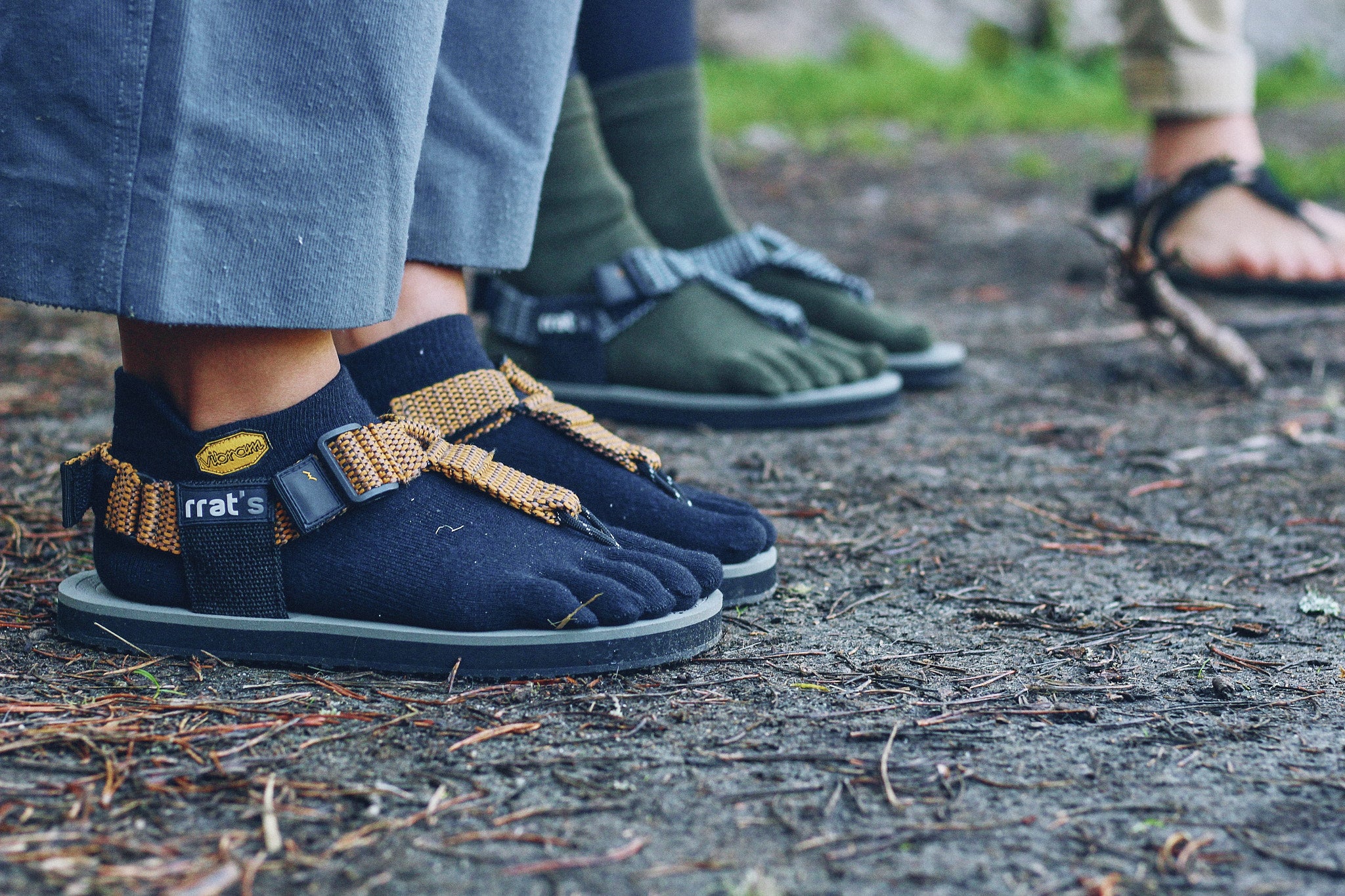When it comes to keeping your feet protected from the cold during long-distance hikes, most people opt for heavy, closed boots. However, with a good combination of hiking sandals and thermal socks, you can achieve equally effective results while keeping your gear much lighter.
RRAT's Outdoor hiking sandals, paired with Vibram technical socks that provide insulation and comfort, can be an excellent alternative for those seeking a lightweight option without sacrificing thermal comfort. Here’s how to use this combination to warm your feet during extended hikes.
1. Advantages of RRAT's Outdoor Sandals for cold climates
Although it may seem unusual to wear sandals in cold climates, RRAT's Outdoor sandals are designed for mountaineering and offer several key advantages:
- Non-slip and Durable Sole: Despite being minimalist sandals, their sole provides excellent grip thanks to Vibram technology, which helps prevent slips on wet or even slightly icy surfaces.
- Controlled Breathability: When paired with high-quality socks, the sandals allow air circulation, reducing sweat buildup. In cold climates, this feature is handy, as damp feet cool down much faster.
- Secure Fit: The adjustment systems in RRAT's Outdoor sandals ensure a snug fit that prevents unnecessary movement, providing stability on uneven terrain.
- Lightweight Comfort: The sandals' lightweight design reduces strain and allows for long-distance walking without the heaviness of hiking boots. This is a major advantage on extended hikes, as less weight on your feet contributes to better physical performance.
2. Vibram thermal socks: Protection and warmth in cold climates
To enjoy the benefits of sandals in winter, it is essential to pair them with socks that provide thermal insulation. This is where Vibram socks come in, known for their advanced technology and high-performance materials.
- Thermal Insulation: Vibram merino wool socks are ideal for retaining heat, as this type of wool is renowned for its insulating properties. Even when damp, these socks retain warmth, which isessential in cold climates.
- Moisture-Wicking Technology: The combination of merino wool and synthetic materials in Vibram socks helps wick away sweat, preventing feet from getting cold and reducing the risk of blisters. This feature pairs perfectly with the breathability of RRAT's sandals.
- Ergonomic Design: Vibram socks are designed to fit the foot perfectly and distribute pressure evenly, making them ideal for long walks. This helps avoid pressure points and reduces the risk of chafing.
3. Keep your feet dry
Moisture is one of the biggest enemies of your feet in cold weather. Even if you’re wearing thermal footwear and socks, sweat and moisture can build up, leading to cooling. Here are some tips to keep your feet dry:
-
Use Absorbent Powders: Applying a small amount of talcum or absorbent powder to your feet before putting on socks can help reduce sweat.
-
Change Your Socks: If you're going on a long hike, bring an extra pair of socks and change them halfway through to avoid sweat buildup and keep your feet dry.
-
Dry Your Feet When Necessary: If you notice your feet are damp, take a few minutes to dry them, especially during long breaks. Leaving your feet wet for too long can make it easier for the cold to seep in.
4. Take breaks and do movement exercises
Breaks during a long hike are important, but stopping too long can cause the cold to settle in, especially on your feet. Here are some tips to stay warm without losing energy:
- Foot Exercises: Perform simple movements like flexing and stretching your toes or rotating your ankles to keep circulation flowing. These exercises help distribute warmth and prevent your feet from getting cold.
- Keep Moving: If you feel your feet starting to chill, pick up your pace slightly or walk on your tiptoes for a few seconds to stimulate circulation and warm up your muscles.
- Avoid Sitting Directly on Cold Surfaces: If you need a break, try sitting on a blanket or an insulating surface instead of the cold ground.
5. BONUS: Choose Clothing That Helps Regulate Body Temperature
Remember that body heat is distributed from the torso to the extremities. Dressing in layers helps regulate temperature, preventing overheating and sweat buildup.
- Base Layer: Wear a thermal base layer that wicks away moisture.
- Mid Layer: A fleece or wool jacket helps retain heat.
- Outer Layer: A waterproof and breathable jacket, preferably with insulation, will protect your torso and prevent the cold from reaching your extremities.
Keeping your feet warm and dry during long hikes in the cold is a challenge that can be overcome with the right preparation. Waterproof and insulated footwear, thermal socks, insoles, and activation exercises are all essential to help your feet withstand low temperatures. Enjoying the winter outdoors doesn’t have to mean discomfort or risk; with these tips, you’ll be ready to face the cold and make the most of your hikes.


